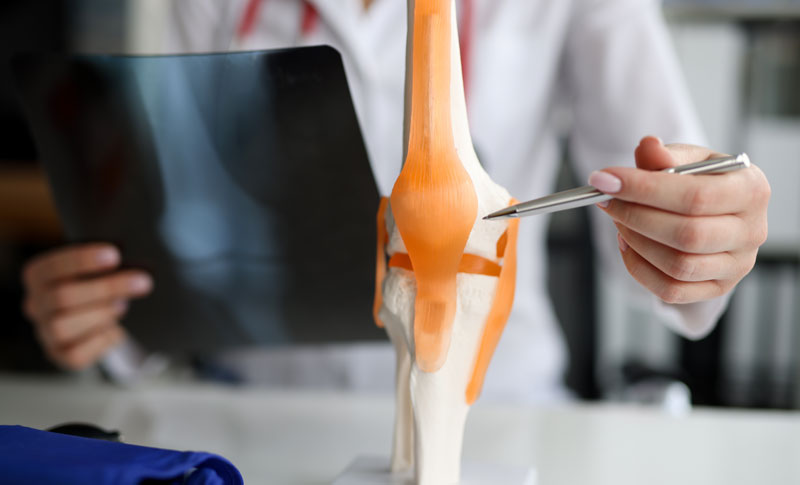-
Email Us
draktiwari@ymail.com
Email Us

April 14, 2025
Arguably the most frequent grievance among adults, knee pain is particularly prevalent among individuals older than 50 years. In some, there is potentially some relief with non-surgical management in the form of physiotherapy, medications, or injections. Nevertheless, if persistent pain in the knee significantly affects mobility and quality of life, knee joint replacement surgery is a proven intervention.
As orthopaedic surgeons, we tend to get asked a great deal of things by patients who are considering knee replacement. In this article, we respond to some of the most common questions to provide reassurance and understanding to practitioners and patients.
Knee arthroplasty, also known as knee replacement, is surgery which involves removing bone and cartilage that has been damaged in the knee joint, replacing it with artificial parts called prostheses. They mimic the function of a healthy knee and reduce pain significantly, and also restore mobility.
There are two types:-
All patients with knee pain are not candidates for surgery. Knee replacement typically is scheduled in those patients who have:-
Orthopaedic diagnosis includes clinical examination and radiological tests like X-rays or MRI to determine the extent of joint destruction.
There isn’t a “perfect” age, but most of our patients who have knee replacement are in the 60 to 80 age range. More and more, improved implant technology nowadays means younger patients (40s and 50s) with disabling pain and disability are presenting for operation, too.
Younger patients should be warned, however, that revision surgery could be required later in life as prosthetic joints will ultimately have to be replaced due to aging.
Recent knee implants are long-lasting and are designed to last 15 to 20 years, or more. Factors that influence the lifespan of an implant are:-
Patients will typically be told to avoid heavy use such as running or jumping following surgery so that the implant is left in the same condition it was designed with.
Recovery is different from patient to patient but generally follows this timeline:-
Physical rehabilitation and physiotherapy are necessary in order to gain strength, flexibility, and normal functioning. The more focused a patient is on physical therapy, the best.
Pain can be anticipated with any operation but adequately controlled based on drugs. Patients are normally prescribed a combination of regional anaesthesia and mechanisms of pain alleviation post operation.
Actually, most of the patients feel much less postoperative pain than they experienced due to their previous chronic pain. Due to more recent minimally invasive surgery and pain control measures, postoperative pain is lessened.
Knee replacement is safe and very successful. It has some risks but:-
These are avoided with good surgical technique, pre-op optimization, and post-op.
While most of the patients experience an amazing improvement in the movement and the pain, it’s reassuring to know that the knee won’t be absolutely the same as an ordinary joint. Some patients experience:
Even though, these sensations pass away with the passage of time, and the improved quality of life fully compensates for them.
Yes, bilateral knee replacement. It is performed:
Replacement at the same time leads to quicker overall recovery but with slightly more risk of surgery. It’s usually utilized in young and healthy patients. Staged replacement is better indicated in older patients or those who have other conditions.
Patients following knee replacement are urged to adopt a healthy lifestyle for protection of their implant and overall long-term success. These include:-
Staying active but careful helps the implant to last longer and work well.
Knee replacement is one of the most successful orthopaedic surgeries. In line with numerous studies:-
All factors, namely patient compliance, operative experience, and patient education, are significant in effective procedures.
There are a number of other treatments aside from surgery that can be prescribed before surgery is under consideration:
When these are not effective, replacement of the knee is the answer.
Knee joint replacement is now a safe and life-altering therapy for patients with chronic disability and pain of the knee joint. With the use of modern operative technique, advanced prosthetic devices, and aggressive rehabilitation, excellent results are achieved by most patients—leading to active pain-free living.
Being orthopaedic surgeons, there is a need to listen to the patients’ problems and set realistic expectations. By providing them with accurate information regarding their problems in the form of short and honest replies, we equip them with the ability to make well-informed decisions regarding their mobility and health.